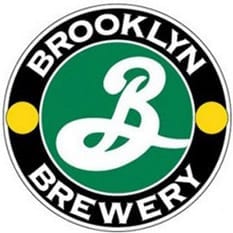Milton Glaser (2000) argues that anything purposeful can be called an act of design
How can we contextualize design?
A good place to begin is with the genesis of Nathan Glaser’s career as a designer.

Nathan Glaser logo for Brooklyn Brewery. Source: March 5, 2013 New Yorker article by Michael Agger: I ♥ BROOKLYN BREWERY
Cats and bats
Milton Glaser remarks in Art is work: Graphic design, interiors, objects and illustration (2000) that he’s drawn to the observation and drawing of animals.
“I realize,” he explains (p. 95), “that what started me on my path in life was a drawing of a bird by my cousin Saul, on the side of a brown paper bag. I was five, and for some reason, had never watched an adult draw something. Watching the drawing take shape was miraculous. Then and there I decided to devote myself to making images.”
Art is work
Art is work (2000) begins with an introduction wherein Milton Glaser suggests that art “seems mostly about money, and designers are increasingly concerned about ethics, the environment, and their effect on the world” (p. 7).
The topic of art and money can be addressed from many points of view as a March 13, 2013 New York Times article suggests.
Glaser is also author of Drawing is thinking (2008) among other publications. In his interview with Peter Mayer in Art is work (2000) he remarks that it would be useful to replace the word art with the word work. This could “restore art to a central, useful activity in daily life.”
What is design?
Also in his interview with Peter Mayer, Milton Glaser comments that he’s often thought about the question of: What is design?
He notes that in teaching – the reference appears to be to his own work as a teacher – “you have to be clear about what you tell your students, so I developed a set of definitions about what design could be” (p. 8).
The definitions he’s developed can be summarized as:
- Design is intervention in the flow of events to produce a desired effect
- Design is the introduction of intention in human affairs.
- Design moves things from an existing condition to a preferred one.
“Design doesn’t have to have a visual component,” he adds. “Ultimately, anything purposeful can be called an act of design.”
Design, from what I can gather from his third definition, involves among other things the application of instrumental reason to promote changes in social, political, and economic conditions.
The history of the branding of totalitarian societies demonstrates that instrumental reason can be applied in a wide range, both productive and catastrophic, of social, economic, and geopolitical contexts.
Moral hazard: “Why catastrophic events like the sub-prime mortgage crisis and climate change are inevitable” (Bryne Purchase)
The third of Glaser’s definitions, which concerns the movement of things from one condition to another, brings to mind a discussion by Bryne Purchase in the April 2013 issue of The Walrus regarding moral hazard as it relates to climate change, economic crises, and wars over oil and natural gas. Bryne Purchase’s book, Navigating the Titanic: Economic growth, energy, and the failure of governance, comes out in April 2013. His Walrus article is illustrated by Ben Weeks, who has worked for such clients as The New York Times, Honda, and Senator Roméo A. Dallaire.
Bryne Purchase notes in his Walrus essay that moral hazard, a term that economists have borrowed from the insurance industry, “exists whenever decision makers in risky situations reap the rewards from their decisions without bearing all of the costs. The ability to pass downside costs on to others encourages imprudent decision making.”
He also notes in his essay that “GDP measures our ability to use tools to alter our environment to suit our tastes. An individual’s income is simply a reflection of his or her control over energy (including food, which is just energy fit for human consumption), meaning the poor are virtually powerless.”
Byrne Purchase’s discussion in turn brings to mind the processes, often of an informal and minimally recorded or unrecorded nature, involving small groups of decision makers, by which contemporary governments design policy.
This is a topic that Donald Savoie has explored cogently and at length most recently in Whatever happened to the music teacher? (2013). I was interested to learn that it can be said, figuratively speaking, that all roads in Canada lead to Bouctouche, which Savoie describes in his autobiography.
Art and design are economic activities
Thus we can add as a corollary to Glaser’s third definition of design that moving things from an existing condition to a preferred one requires access to energy.
Access to energy in turn requires access to income, that is, to money.
Thus it can be argued that while art, in Glaser’s words, is mostly about money, the same can be said of design.
His comments, published in 2000, that designers are increasingly concerned about the environment, ethics, and their effect on the world – have a measure of validity.
However, the larger context is that both art and design – and not just art in distinction from design – are to a great extent contingent on access to steady streams of income.

Leave a Reply
Want to join the discussion?Feel free to contribute!